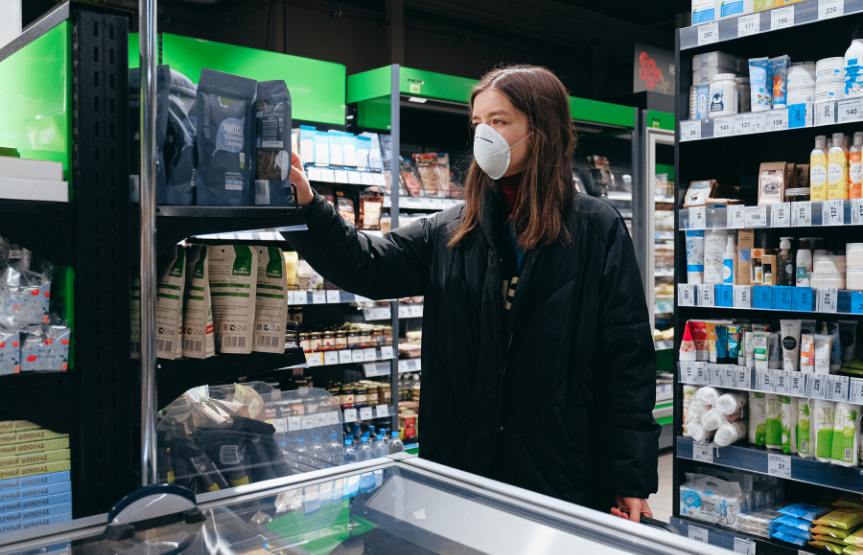Covid-19 The pandemic

Coronaviruses are a family of viruses which can cause acute respiratory problems like Middle East Respiratory Syndrome (MERS) or Severe Acute Respiratory Syndrome (SARS) and they were primitively spread from animals to humans. The name of this virus originates from the Latin word “corona” which means crown, beneath the electronic microscope the coronavirus looks like it is encircled by a solar corona. The newly observed novel of coronavirus is called COVID-19, it was first discovered in December of 2019 in China and had not been found in humans till then (Aljazeera 2020) (World Health Organization 2020). When a person ate a bat, the current strain was transmitted to the individual and caused respiratory problems which led to its death. The disease was rapidly appeared have a structural similarity to the virus that caused the SARS. As in two previous examples of development of coronavirus disorder in the past eighteen years – SARS and MERS – COVID-19 outbreak has provoked critical challenges for the national healthcare systems, research programs and medical associations (Fauci et al. 2020).
Epidemiological and clinical characteristics of a person who suffers from the coronavirus have been reported, but endangerment aspects of mortality and detailed clinical development of the disorder, including viral desquamation, have not been well characterized (Zhou et al. 2020). According to the World Health Organization the most frequent symptoms of the Coronavirus are: fever, cough, tiredness, sometimes nasal congestions, runny nose, sore throat and aches in the body. Most people recover from the illness without needing any special therapy. Although older people, and those who suffer from underpinning medical disorders like heart problems or high blood pressure, are at higher risk of developing serious illness (World health Organization 2020).
It is believed that the virus spreads generally between individuals that get in contact within six feet, through tiny respiratory droplets which are being tossed out via coughing, sneezing or talking. These infected droplets can land in the oral cavity or nose of a healthy person, be inhaled and then cause respiratory problems. There is also a possibility of getting infected by the coronavirus through touching a contaminated surface or object and then rubbing your nose or mouth, nevertheless scientists are not considering it the main way of the COVID-19 spreading (MIT Medical 2020).
According to the latest statistics COVID-19 has struck 210 countries among which U.S has the highest number of confirmed cases (614,246) and total deaths (26,064). While Spain is the second in the list with 177,633 confirmed cases and 18,579 deaths (Worldometers 2020). The number of established cases informs us about the growth of the pandemic, but the verification of a case is based on a test.
Testing is the most important mean that can help us slow and decrease the spread of the coronavirus. It can be very helpful in the identification of infected patients, orientation of the medical treatment that they obtain and also in enlightenment of our comprehension of the risks that Coronavirus raises in the different populations. There are two types of tests for the COVID-19: the test that searches for the appearance of the virus, seeking to establish if a person is presently infected, and the test that tracks down the existence of antibodies, aiming to determine whether a patient has been infected in the past. The first kind of test can be performed with a PCR (Polymerase Chain Reaction) while the second kind which is called “serological test” is currently in the research level of development. Scientists believe that the serological test will be fundamental to determine how far COVID-19 has spread throughout any population (Hasell et al. 2020)
References:
- Aljazeera 2020. Coronavirus: All you need to know about symptoms and risks. Available at: https://www.aljazeera.com/news/2020/01/coronavirus-symptoms-vaccines-risks-200122194509687.html> [Accessed April 2020]
- Fauci A. et al. 2020. Covid-19 – Navigating the Uncharted. | NEJM. New England Journal of Medicine. Available at: https://www.nejm.org/doi/full/10.1056/nejme2002387 [Accessed April 2020]
- Hasell J. et al. 2020. To understand the global pandemic, we need global testing – the Our World in Data COVID-19 Testing dataset. Our World in Data. Available at: < https://ourworldindata.org/covid-testing > [Acessed April 2020]
- Liverpool L. 2020. Available at: < https://www.newscientist.com/term/coronavirus/> [Accessed April 2020)
- MIT Medical. 2020. FAQ: COVID-19 (Coronavirus disease 2019). Available at: < https://medical.mit.edu/faqs/COVID-19#faq-2 > [Accessed April 2020]
- Ramsey L., Woodward A. 2020. The US is struggling to test more people for the coronavirus. Now it's facing a shortage of the materials used to run those tests. Available at: < https://www.businessinsider.com/coronavirus-testing-may-be-limited-by-shortage-of-materials-2020-3> [Accessed April 2020]
- World Health Organization. 2020. Available at: https://www.who.int/halth-topics/coornavirus#tab=tab_1 [Accessed April 2020]
- World health organization. 2020. Q&A coronaviruses (Covid-19). Available at: < https://www.who.int/news-room/q-a-detail/q-a-coronaviruses#:~:text=symptoms [Accessed April 2020]
- 2020. Coronavirus Update (Live): Cases And Deaths From COVID-19 Virus Pandemic – Worldometer. Available at: < https://www.worldometers.info/coronavirus/> [Accessed April 2020]
- Zhou F. et al. Clinical course and risk factors for mortality of adult inpatients with COVID-19 in Wuhan, China: a retrospective cohort study. The Lancet.
